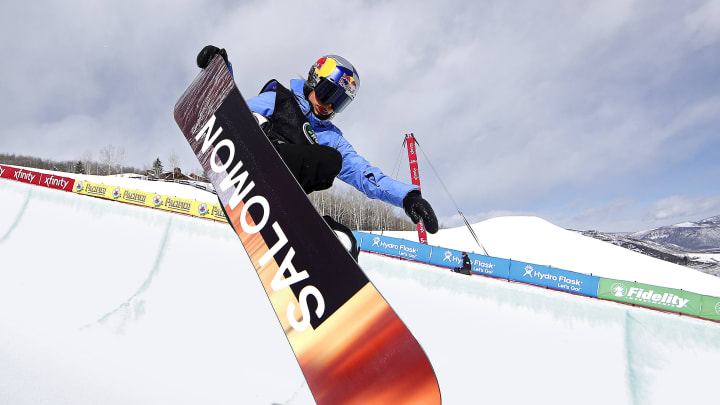Can You Tell the Difference Between Natural and Man-Made Snow?

Maddie Mastro knows her snow.
The 21-year-old snowboarder from Wrightwood, Calif., can expound on the differences between the flakes upstate at Mammoth Mountain (“it’s really heavy and wet”) and the powder in Colorado (“it’s typically dry and fluffy”), so she can tell instantly when the snow in a halfpipe is fake.
Mastro says artificial snow—like the stuff that will dominate the Beijing 2022 Olympics—is sticky and “doesn’t glide the way natural snow glides,” so it feels like you’re riding on sand or carpet. But like all the skiers and snowboarders who will compete in the 2022 Olympics, she has learned how to adjust to the icy imitations that will cover the courses, hills and halfpipe in greater Beijing. Mastro, who finished 12th in the halfpipe at the 2018 Games, likens man-made snow to fine-grit sandpaper. Because it lacks any natural moisture or crystals, she says, snowboarders use a harder wax made for colder temperatures to make sure their boards will “stand up to the snow” and “slide as fast as possible.”
“Natural snow kind of cuts like butter,” she says. “It’s smooth, and the snow feels good. Man-made is quite a harsher cut. It rips moisture out of your board fast. You want your board to be as well hydrated as possible to help it glide against the snow.”
Slopestyle rider and 2018 gold medalist Red Gerard echoes Mastro’s preference for real snow, adding that his “edges grip way better” when competing on a course made from it. Gerard says of the fake stuff, “It’s just like a hockey rink when you have hockey snow. It’s basically shaved ice. That’s what it feels like you’re riding on.”
According to U.S. cross-country skier Hailey Swirbul, artificial snow is also more firm and harder-packed, which requires competitors in her sport to generate even more power as they race. To prevent slippage and provide traction on the course, athletes apply kick wax, or grip wax, to the middle third of the ski, or the kick zone. The 23-year-old Coloradan says skiers choose the type based on the conditions—hard waxes for colder temperatures, and softer, super sticky ones for warmer environments—but the man-made version makes it “a little bit trickier” to figure out because of the varying humidity levels that the snow is created in.
During training, most Olympic hopefuls don’t seek out fake snow because they encounter it throughout the season, anyway. Mastro rarely finds a halfpipe that is completely natural, due to the amount of snow it requires. Most are a mix of real and fake, so athletes will have experience competing under various conditions before they arrive in Beijing. “It’s just something that we get used to having to adapt back and forth to,” says Swirbul.
Despite its tacky texture, the artificial stuff, Mastro says, “would not make a good snowball.” So don’t expect to see someone’s version of Frosty along the slopestyle course or cross-country track this month.
More Olympics Coverage
• For Outdoor Winter Olympians, Combating the Conditions Is Critical
• How the Artificial Snow Was Made for the Beijing Olympics
• Mikaela Shiffrin Is Focused on the Process
